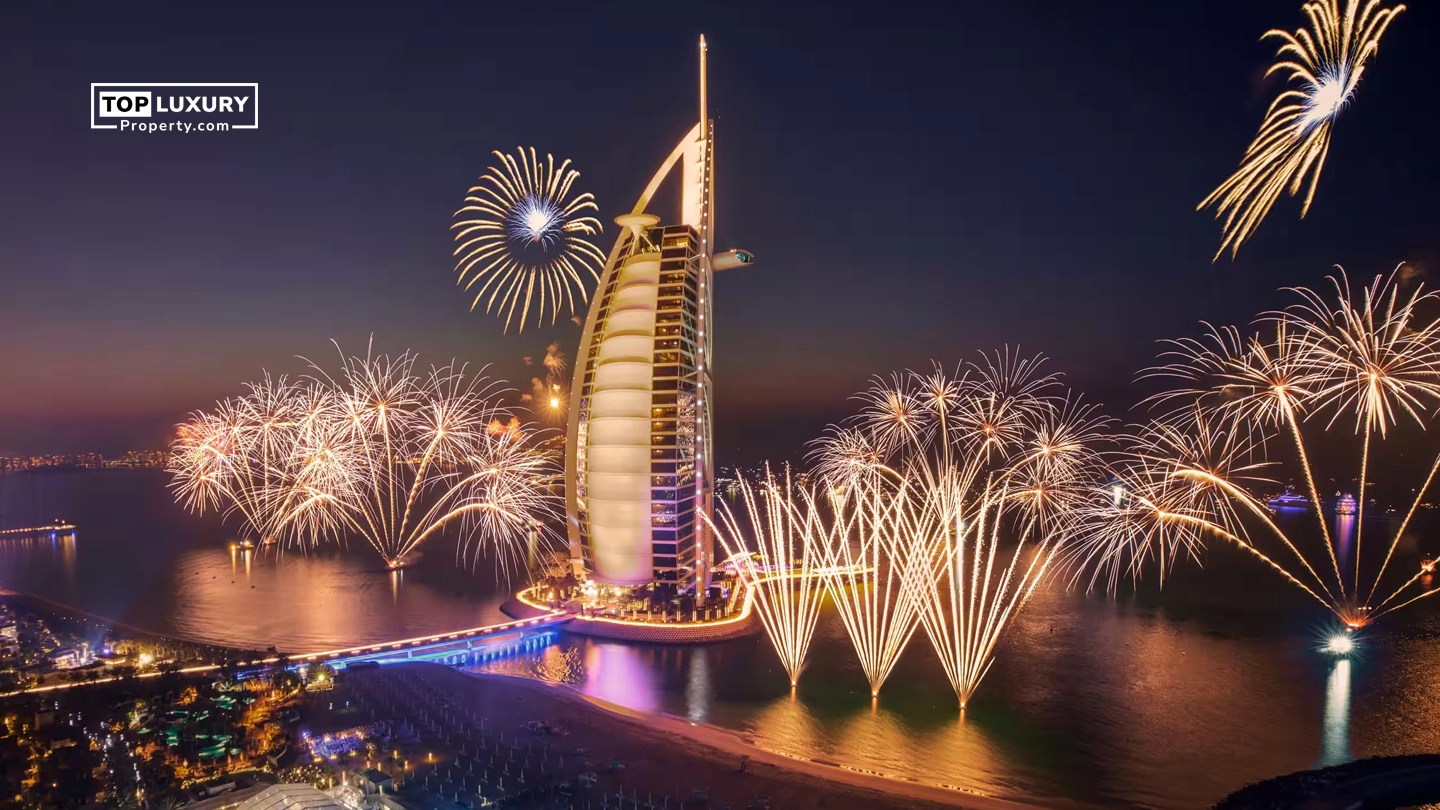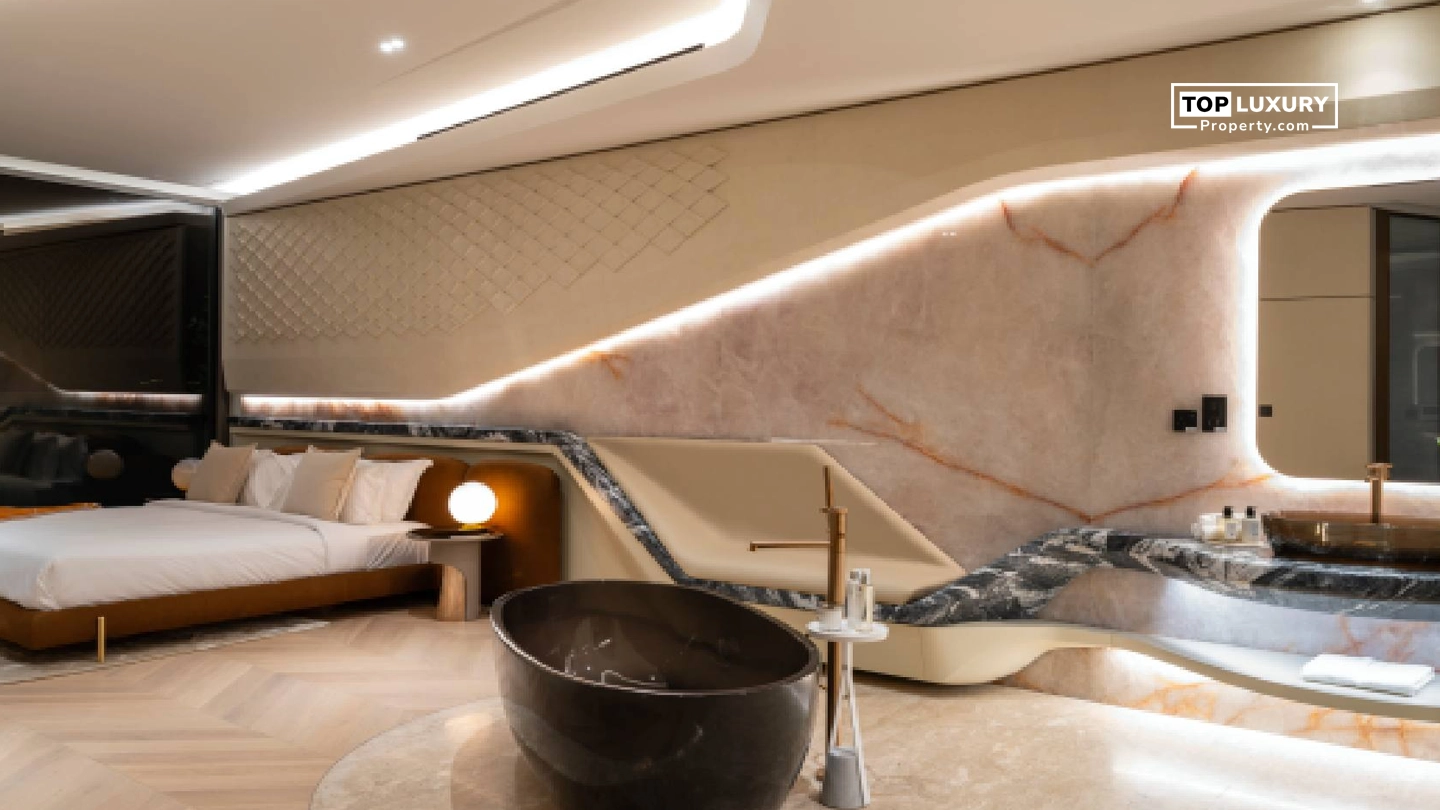Dubai Metro Blue Line Introduction
The Dubai Metro Blue Line will transform Dubai’s public transport and is a major milestone in the emirate’s journey to becoming a smart & sustainable city. This Dh56 billion project will add 30km to the existing metro network, 14 new stations and connect key areas of the city. The Blue Line will change urban mobility, boost property values and be part of Dubai’s vision of being a ‘20-minute city’.
Routes Towards The Dubai Metro Blue Line Station

The Dubai Metro Blue Line map shows two main routes, connecting to the existing Red and Green Lines:
| Route | Connection | Distance & Stations | Key Stops |
|---|---|---|---|
| Route 1 | Green Line Connection | 21 km, 10 stations | Al Khor Interchange (Green Line) → Dubai Festival City → Dubai Creek Harbour → Ras Al Khor → International City (1, 2 & 3) → Dubai Silicon Oasis → Dubai Academic City → Al Ruwaiyah 3 Depot |
| Route 2 | Red Line Connection | 9 km, 4 stations | Centrepoint Interchange (Red Line) → Mirdif → Al Warqa → International City 1 (connects to Route 1) |
A highlight of the Dubai Metro Blue Line is the 1.3km bridge over Dubai Creek, the first of its kind in the city’s metro system. This engineering feat will give commuters stunning views and reduce travel times. It will connect residential areas to Dubai International Airport in just 20 minutes and reduce traffic congestion by 20 per cent
The significant addition of Dubai Blue line Metro is nine elevated stations and five underground stations. The Dubai government planned that the exterior design of the elevated stations will be in the shape of a seashell, while the interior design of the stations reflects seven thematic models: Heritage, Earth, Air, Fire and Water.
World’s Highest Metro Station
The most notable attention grabber of the Blue Line Metro will be the Emaar Properties Station, the world’s highest metro station at 74 meters. Designed by Skidmore, Owings & Merrill (SOM), the architects behind Burj Khalifa, this blue line station will be:
- 11,000 square meters in total area
- Daily capacity of up to 160,000 passengers
- Projected daily usage of over 70,000 passengers by 2040
- Innovative design inspired by the concept of a “crossing gateway”
The planned Emaar South Metro Station Blue Line will also improve connectivity for residents in emerging communities. This iconic station will be a transport hub and a landmark attraction, further solidifying Dubai’s reputation for architectural innovation.
The Largest Underground Station
Like the highest metro station, Dubai Metro Blue Line stations will see a massive underground interchange station located at International City 1. Spanning an impressive 44,000 square metres, this station is designed to accommodate up to 350,000 passengers per day. This makes it the largest underground metro station on the Dubai Metro map.
Key features of the International City 1 station include:
- Strategic position connecting the Blue Line with both the Red and Green lines
- Public bus terminals
- Taxi stands
- E-scooter and bicycle racks
- Inclusive amenities for people of determination
Accessibility from Blue Line Station Dubai Hills Estate will provide better links to shopping, leisure, and residential zones. This state-of-the-art station will serve as a major hub in the Dubai Metro network, enhancing the city’s integrated transport ecosystem and supporting Dubai’s vision of a “20-minute city”.
Integration with Existing Metro Lines
The Dubai Metro will get a major boost with the Blue Line. It will connect to the Red Line at Centrepoint and the Green Line at Creek, making the public transport network more connected and seamless for the city. The Dubai Metro Blue Line Station Dubai Hills is expected to see a rise in demand from both investors and home seekers. This will make transfers between lines and travel across Dubai easier.
Dubai Metro Blue Line Passenger Capacity
The Dubai Metro Blue Line is designed to handle a substantial volume of passengers:
- Over 850,000 passengers per day
- 200,000 passengers by 2030
- 320,000 passengers by 2040
These numbers show how important the Blue Line will be in accommodating Dubai’s growing population and visitor numbers and further enhancing Dubai’s public transport. For residents in the south of the city, the Blue Line Metro Emaar South Station will be a game-changer for daily commutes. With the completion of the project, Dubai’s total rail network will expand to a total of 131 km, comprising 78 stations and 168 trains.
Dubai Metro Blue Line Nearest Communities

The Dubai Metro Blue Line stations will connect nine key areas, enhancing accessibility and reducing commute times:
- Dubai International Airport
- Mirdif
- Al Warqa
- International City 1 and 2
- Dubai Silicon Oasis
- Academic City
- Ras Al Khor Industrial Area
- Dubai Creek Harbour
- Dubai Festival City
This strategic announcement has already had a big impact on property values and rents in these communities it will serve:
- Rents in the above-mentioned communities have gone up by 23% since the announcement in November 2023.
- They will go up by another 30% by 2029, faster than non-metro areas.
Rental increases by area since November 2023:
- Academic City: 43% (studio apartments from Dh42,000 to Dh60,000 per annum)
- Dubai Creek Harbour: 30%
- Al Warqa and Silicon Oasis: 28%
- International City 1 and 2: 22% (International City 1 and 2: 22%): 15
- Ras Al Khor Industrial Area: 21%
- Mirdif and Dubai Festival City: 15%
Historical data from the Dubai Metro Red Line project in 2009 showed:
- Properties within a 15 minute walk of the Red Line saw prices go up by 25%
- The biggest appreciation (around 40%) was seen in properties within a 5 to 10 minute walk
- Rents went up by 8% for properties within a 15 minute radius and 14% for those within 5 to 10 minutes
Experts say the completion of the Dubai Metro Blue Line will further increase connectivity and demand, with rents in these areas going up faster than non-metro areas. This is good news for investors, especially for studio units.
Dubai Metro Blue Line Nearest Off-Plan Projects
Blue Line has already generated interest in off-plan projects near the stations. Some notable developments are:
| Dubai Creek Harbour | Dubai Silicon Oasis | International City |
|---|---|---|
| Emaar Green Cate, Emaar The Cove 2, Emaar Palace Residences North | Aura Prestige Timez by Danube, Ellington The Hillgate | ANAX Kyomi Residence, Moonsa Residences 2, Silver Park Residency |
Investors and homebuyers are showing huge interest in these areas as they expect value appreciation once the Blue Line is operational. These projects will greatly benefit from the connectivity offered by the new metro line.
Economic Benefits of Metro Blue Line
The Blue Line supports Dubai 2040 Urban Master Plan. The main economic benefits of metro blue line are s follow:
- Benefit-cost ratio of 2.60 by 2040 (Dh2.60 in benefits for every Dh1 spent)
- Total benefits exceeding Dh56.5 billion by 2040
- Property value appreciation up to 25% near stations
- 20% reduction in traffic congestion along served routes
- Time, fuel and carbon savings
The project is also aligned with Dubai’s green initiatives, the first transport project in the city to fully comply with green building standards, achieving Platinum Category certification. This adds to the Blue Line’s positive impact on Dubai’s urban development.
Conclusion
The Dubai Metro Blue Line reshapes urban mobility. It connects key residential, commercial, and educational hubs. It reduces traffic, saves time, and supports Dubai’s growth plan. If you plan to invest or live near a metro station, now’s the time to act. Keep an eye on the Metro Blue Line completion date: September 2029.





_(2)_638647637563832478_820465_.webp)